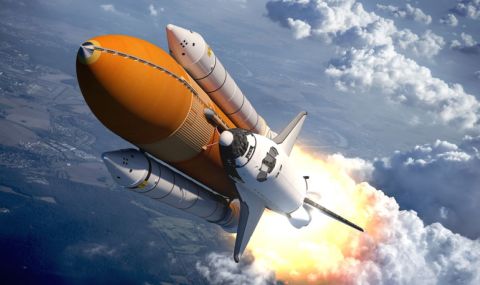On January 5, 1972, President Richard Nixon signed a bill allocating $5.5 million to develop the space shuttle.
It represented a giant leap forward in space travel technology.
Designed to function as an economical, reusable aircraft rather than as a capsule launched by disposable rockets, the shuttle provided NASA pilots and scientists with more time in space to conduct space-related research.
On April 12, 1981 NASA launches first space shuttle, Columbia.
135 flights completed by end of program in 2011.
Designed to be reusable up to 100 times, the US space shuttle was originally expected to reduce the high costs of low-Earth orbit spaceflight. Once the system was up and running, however, the vehicle's operating costs and the time needed for upgrades between flights proved to be significantly higher than early estimates.
According to some estimates, each shuttle flight cost a staggering $1.5 billion. Officially, NASA claims that each flight cost just $450 million, according to the "Daily Telegraph".
Preparation for each mission took months, if not years. And shuttle flights were far from routine. Instead of a weekly trip into space, NASA had to settle for just a few launches a year, the Guardian points out.
The shuttle program also claimed human lives twice,
when the shuttles "Challenger" and "Columbia" exploded, respectively, in 1986. and 2003.
This only delayed the program even more, and shuttle flights were canceled twice in more than two years, adds the "Daily Telegraph".
The end of the shuttle era certainly made many focus on the shortcomings, problems and mismanagement of the NASA program.
But amidst all this criticism, it should not be forgotten that the shuttle program
achieved a lot
Thanks to it, the "Hubble" telescope was launched into space, and then thanks to it again, it was repaired and continues to send us stunning space images today.
Thanks to the shuttles, the "Chandra" X-ray observatory was also launched into orbit and the $100 billion International Space Station project is being implemented.
According to Scott Altman and Pierce Sellers, two of the American astronauts who flew the shuttles, the most important achievement of the program is that the astronauts learned how to construct spacecraft in space.
This knowledge will be needed for a possible mission to Mars. According to the two astronauts, quoted by the newspaper The Guardian says the US must now make a major decision about the future of its space programme and seek to master space in collaboration with other countries, as it did with the International Space Station.
The end of the shuttle era, however, could bring NASA closer to the end of its golden age of space exploration, warns the Daily Telegraph.
In figures, the end of the shuttle programme will lead to the direct loss of 9,000 jobs in the US over the next six months and put another 23,000 workers at risk, the newspaper adds.
The US will also be forced to pay tens of millions of dollars to Russia so that American astronauts can travel in old-fashioned Russian spacecraft "Soyuz" to the ISS.
All this has nothing to do with
the optimism from the time of the success of the first American space programs-
the "Mercury" project in 1959, the "Gemini" program that followed it, and the next "Apollo" program, the publication notes.
The newspaper also recalls that while the United States is abandoning the "Constellation" program to send a man to the Moon, and then to Mars, driven by the desire for budget savings, other countries such as China and India are showing great ambitions in this direction.
Beijing, for example, wants to send a man to the Moon in 2025.
